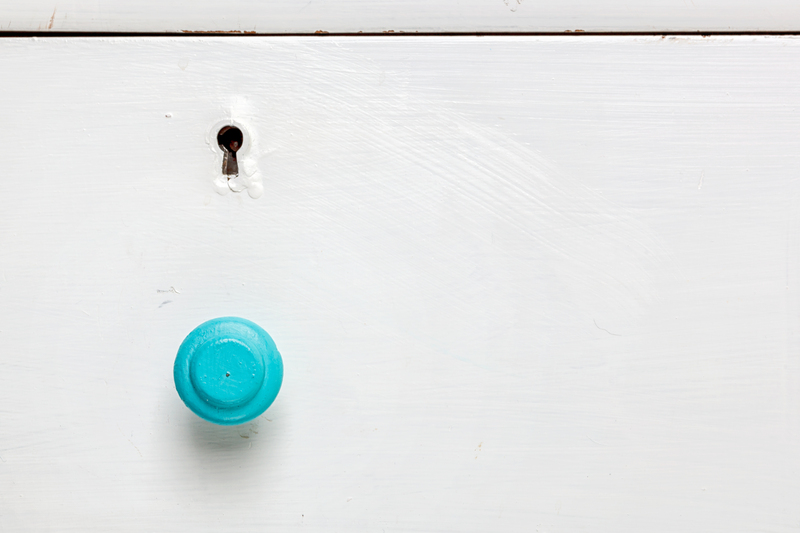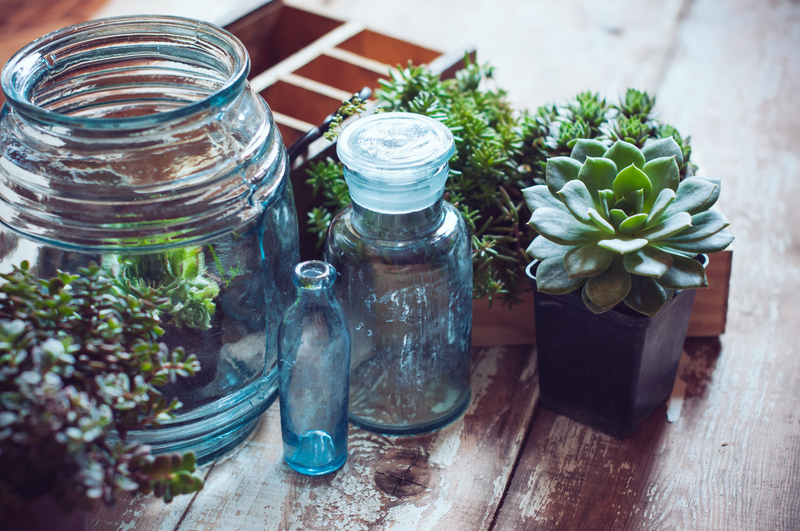From Kitchen to Recycling Plant: The Journey of Old Pots and Pans
When you buy a shiny new saucepan or frying pan, you probably don't give much thought to what happens to your old pots and pans. However, these humble kitchen tools go through an intriguing transformation once they leave your kitchen cupboards. In this comprehensive article, we'll explore the journey of old pots and pans -- from their last meal to their rebirth through recycling.
The Lifecycle of Cookware: When Pots and Pans Outlive Their Usefulness
The average household cooks thousands of meals using trusty cookware. Over time, these implements become worn, scratched, and perhaps even warped. Whether due to non-stick coatings wearing off, broken handles, or simple upgrades, every pan eventually reaches the end of its kitchen life. But discarding pots and pans isn't as simple as tossing them into the trash.
Common Reasons for Discarding Cookware
- Scratched non-stick surfaces: Can release harmful chemicals.
- Warped or damaged pans: Affect cooking performance and safety.
- Broken handles or lids: Make usage inconvenient or dangerous.
- Upgrading to newer technology: Better heat distribution, eco-friendly designs.
- Change in cooking needs: New cuisine interests, change in family size, etc.
When it's finally time for those old metal pots and pans to leave your kitchen, the real journey begins.

What Are Pots and Pans Made Of?
Understanding the materials in your cookware is crucial for correct disposal and recycling. Most pots and pans fall into several material categories:
- Stainless Steel: Rust-resistant, long-lasting, and highly recyclable.
- Aluminum: Lightweight, excellent heat conductor, also widely recycled.
- Copper: Excellent heat transfer, more expensive, valuable for recycling.
- Cast Iron: Durable and heavy, recyclable but requires special handling.
- Non-Stick Coated (e.g., Teflon): Aluminum or steel base with a chemical coating; the coating complicates recycling.
Why Material Matters
Steel and aluminum are among the world's most recycled materials. Their recovery saves energy and resources compared to sourcing new raw materials. However, cookware with mixed materials, such as plastic handles or glass lids, requires additional steps before recycling.
Step by Step: The Journey from Kitchen Cupboard to Recycling Plant
Let's dive into the process that transforms used pots and pans into valuable new items. This journey includes correct preparation for recycling, local collection, sorting at recycling centers, and reprocessing.
1. Preparing Old Cookware for Recycling
- Remove Non-Metal Parts: Take off plastic handles, knobs, or lids that aren't metallic.
- Clean Out Residue: Scrub away stuck-on food and oils to facilitate proper recycling.
- Check Local Guidelines: Some areas allow you to dispose of cookware as scrap metal, while others have special requirements.
2. Local Collection Points and Scrap Yards
Most municipal curbside programs do not accept old cookware in regular recycling bins, mainly because pans can jam recycling machinery. Instead, bring items to:
- Local scrap metal yards - They often pay for items by weight.
- Special recycling events - Some communities hold drives for "hard-to-recycle" items.
- Household waste recycling centers - Accept a variety of metals.
Some national chains (e.g., certain hardware stores) also occasionally run cookware take-back programs.
3. Sorting and Processing at the Recycling Center
Once delivered to the proper facility, your old cookware is sorted by type:
- Magnetic separation: Pulls out ferrous metals (steel, iron) from non-ferrous (aluminum, copper).
- Further separation: Based on size, type, and purity.
- De-coating: Non-stick pans may be blasted or chemically treated to remove Teflon or other coatings.
After sorting and de-coating, the metal components are shredded to facilitate melting.
4. Melting and Re-purposing
In huge industrial furnaces, scrap metals from pots and pans are melted down. The resulting molten metal can be:
- Cast into ingots: Large blocks used as raw material for new manufacturing.
- Rolled into sheets or wires: Essential supplies for multiple industries.
- Alloyed: Mixed with other metals for desired qualities.
The recycled metal is now ready to be transformed into new products -- perhaps even a new pan, automotive parts, or construction material!
Why Recycle Pots and Pans? - The Environmental Impact
Recycling your old pots and pans isn't just about clearing kitchen space. It has widespread benefits for our planet:
- Reduces landfill waste - Metal takes decades to centuries to break down in a landfill.
- Saves natural resources - Making new steel or aluminum from scrap uses far less energy and ore.
- Decreases pollution - Mining and refining new metals create more emissions than recycling.
- Supports a circular economy - Materials are reused, reducing the need for virgin resources.
Every frying pan or soup pot recycled directly saves raw material, energy, and reduces greenhouse gas emissions. According to the U.S. Environmental Protection Agency (EPA), recycling aluminum saves up to 95% of the energy compared to producing it from raw ore.
Other Ways to Extend the Life of Cookware Before Recycling
Before hauling your old pans to the scrap yard, consider reusing or repurposing them. There are plenty of creative and environmentally friendly alternatives:
- Donate to charities or shelters: Your old pots might be useful to someone starting out.
- Use in the garden: Cast iron pans make excellent planters!
- Repurpose for storage: Deep pots can hold tools, craft items, or pet food.
- Art and DIY projects: Turn them into quirky wall clocks, birdbaths, or candle holders.
- Sell online: Vintage cookware or branded items often have resale value.
Giving your kitchenware a second life extends its usefulness, saves resources, and reduces your carbon footprint.
Frequently Asked Questions About Recycling Old Pots and Pans
1. Can non-stick pans be recycled?
Non-stick pans can generally be recycled, but only after the coating is removed. Most scrap metal yards require the pans be stripped of their plastic or Teflon coatings first. Check with your local center for their specific requirements.
2. What about ceramic, glass, or enameled cookware?
Cookware made of pure ceramic, glass, or with a heavy enamel layer is not accepted in metal recycling programs. These items need to be disposed of in specialized facilities or reused in creative ways.
3. Should I remove the handles and lids?
Yes, if possible. Remove plastic, silicone, or wood handles and any glass/plastic lids before recycling. Only the all-metal parts are recyclable at most scrap yards.
4. Do thrift stores accept old pots and pans?
Many thrift stores and charities accept gently used cookware, especially if they're not heavily damaged or warped. Call ahead to confirm their current policies.
5. Are there manufacturers that recycle old cookware?
Some companies (e.g., select cookware brands) operate take-back or recycling programs for used products. Search online or contact brands' customer service for options.
Recycling Old Pots and Pans Around the World
The recycling journey of old pots and pans differs globally depending on local facilities and environmental laws.
- Europe: Many cities offer dedicated scrap metal bins at local recycling centers.
- United States & Canada: Most city recycling programs direct residents to metal scrapyards or hazardous waste events for pots and pans.
- Australia: Household recycling centers differ by council; check for local metal drop-off points.
- Asia: In densely populated regions, informal recycling markets may recover large quantities of metal cookware for reprocessing.
Wherever you live, always research your local recycling guidelines for the most eco-friendly way to dispose of old cookware.

Key Takeaways: Ensuring a Greener Kitchen and Planet
- Avoid tossing old pots and pans in the trash.
- Check local recycling rules for "scrap metal" or "cookware".
- Remove all non-metal parts before recycling.
- Explore reusing, donating, or repurposing before disposal.
- Recycling saves energy, resources, and reduces pollution.
Conclusion: The Ongoing Adventure from Kitchen to Recycling Plant
The next time you upgrade your saucepan or retire a well-loved skillet, remember that the journey of old cookware doesn't end at your curb. With the right steps, your sturdy pan can become part of something new -- contributing to a greener, cleaner environment. By making informed choices about recycling old pots and pans, you play a vital role in reducing waste and preserving precious natural resources.
Let your old cookware embark on its sustainable journey -- from your kitchen to the recycling plant, and beyond!